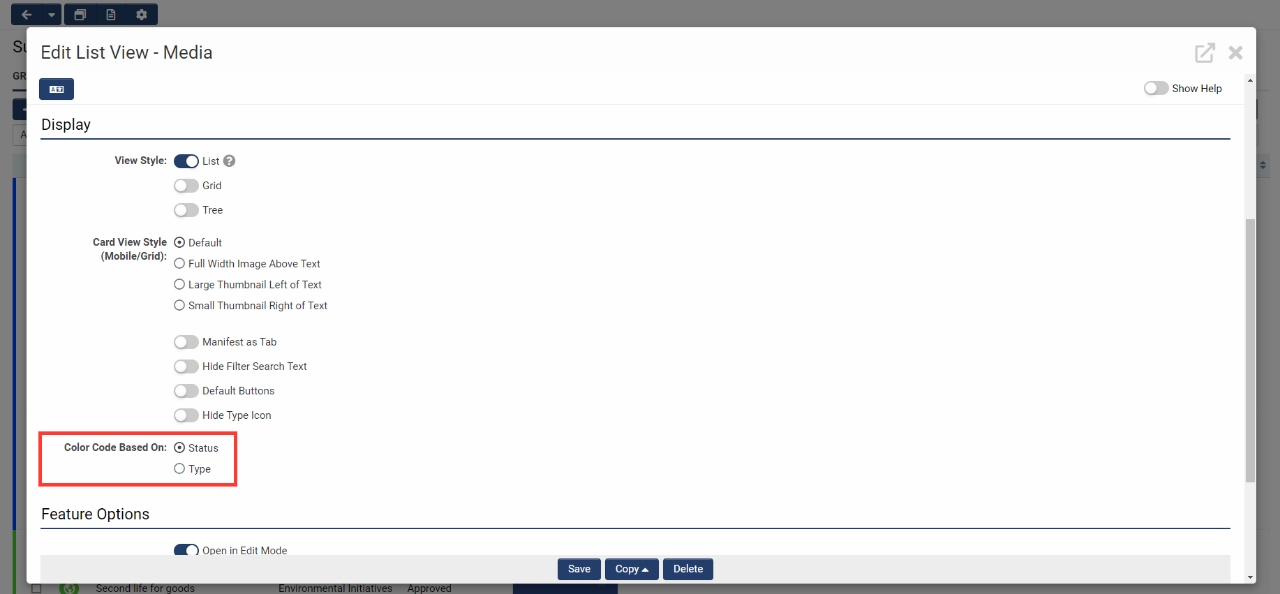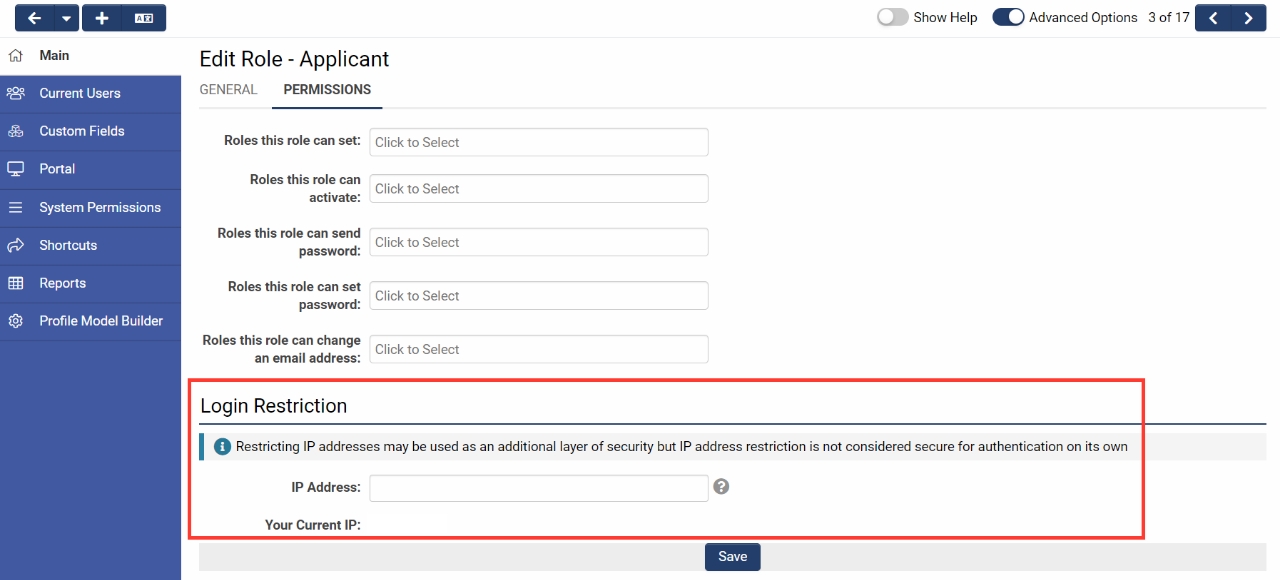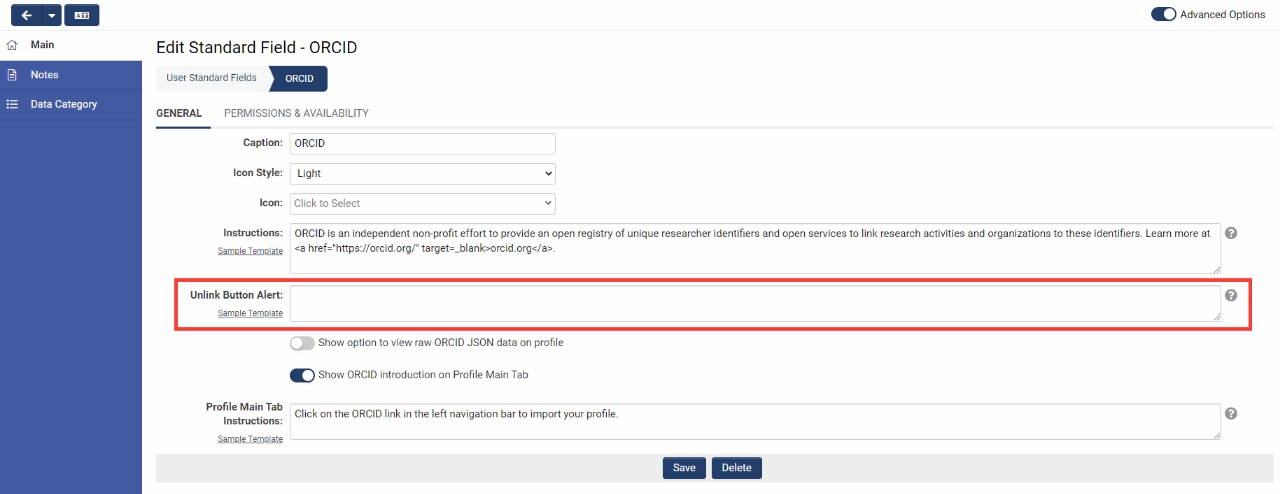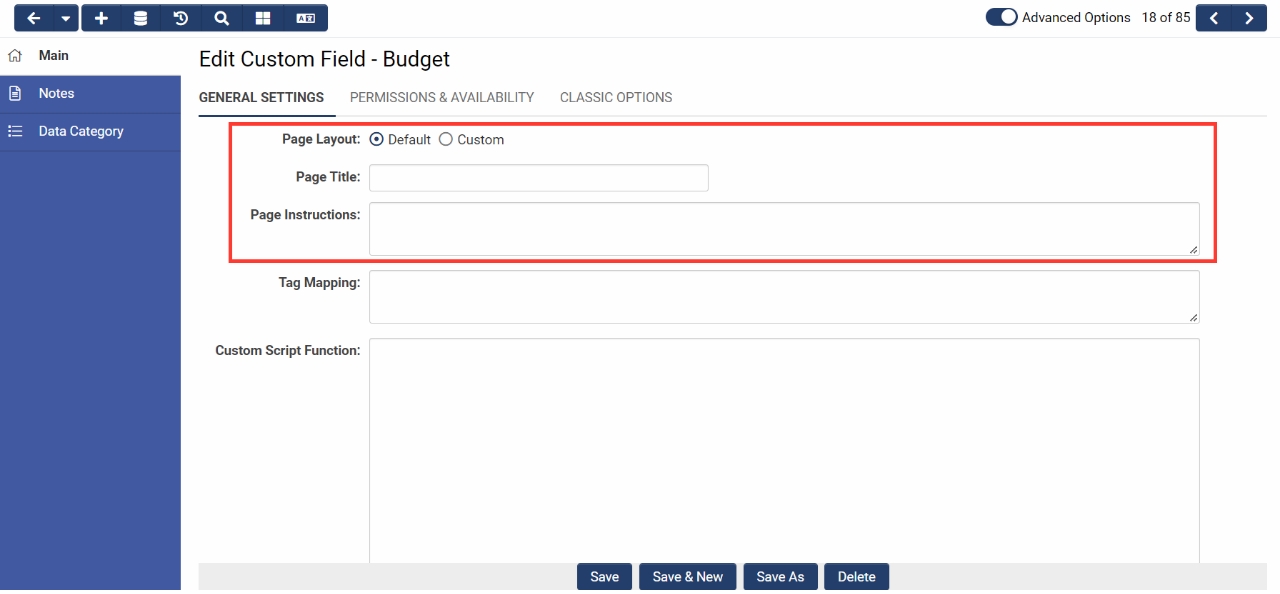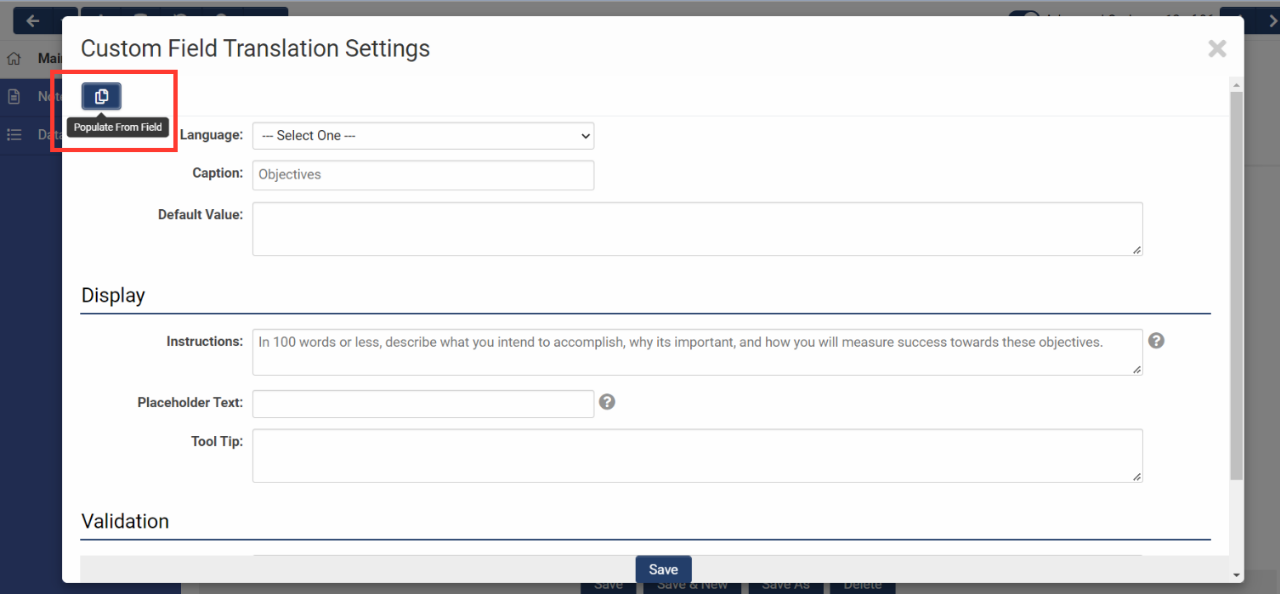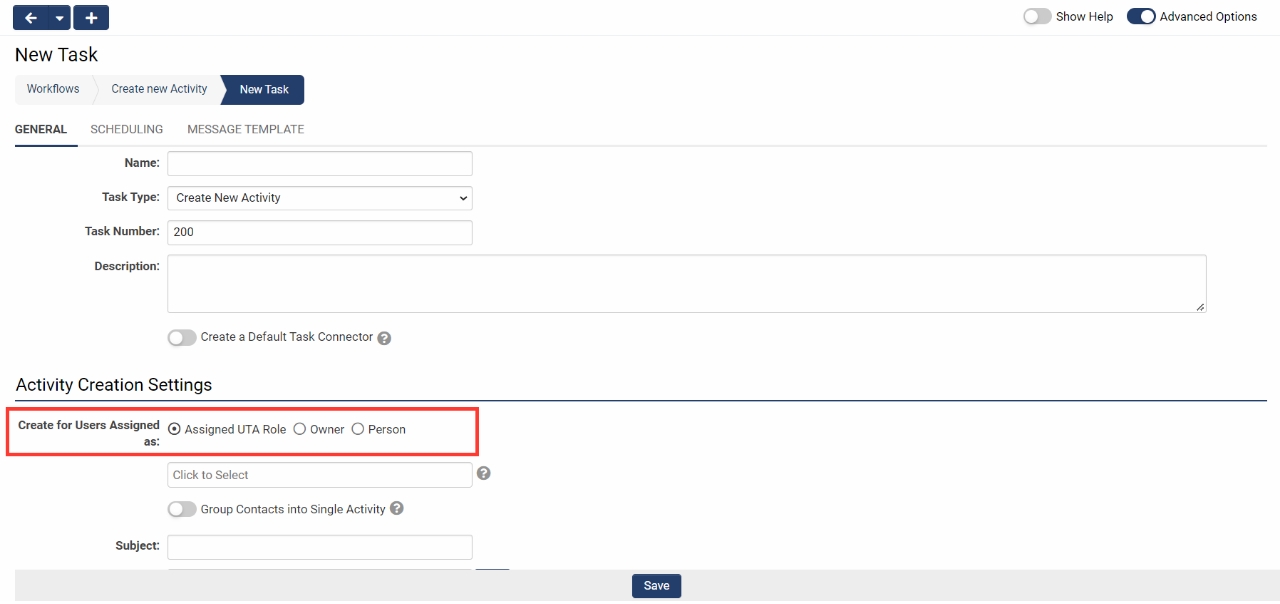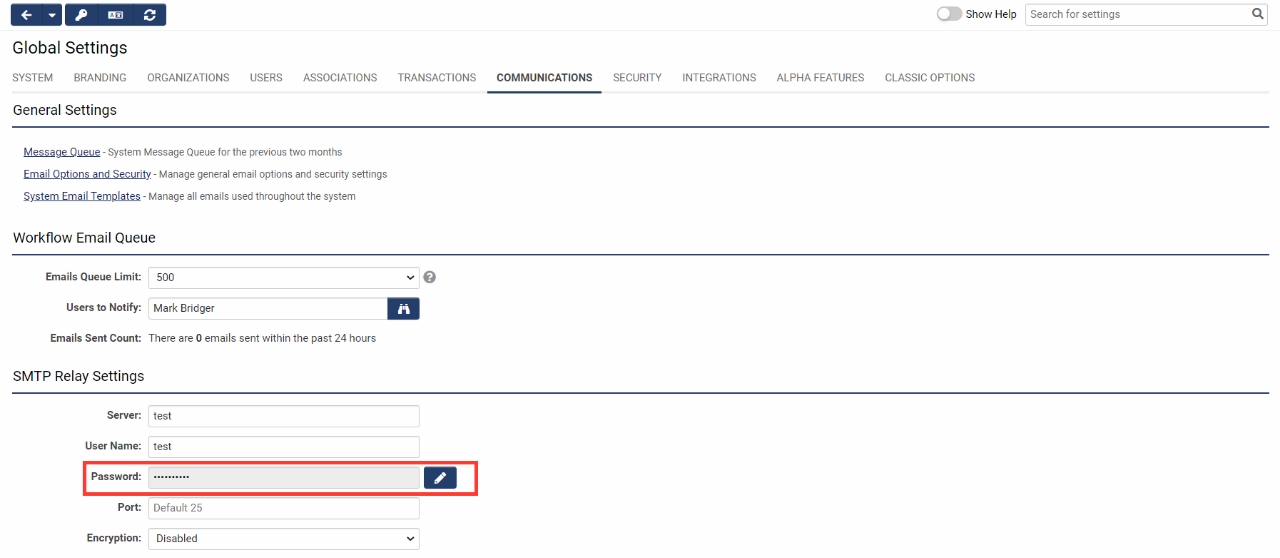Difference between revisions of "Template:March2022Upgrade"
Ann Vincent (talk | contribs) m (→Added Routing Options to the Create New Activity Workflow Task Type) |
Ann Vincent (talk | contribs) m (→Added Routing Options to the Create New Activity Workflow Task Type) |
||
| Line 74: | Line 74: | ||
It’s now easier to assign users to newly created activities without the need to create specific UTA roles. This change applies to all workflow types related to a specific tracking applicaiton. To view this setting, go to '''Workflows''' > Edit a workflow > Create or edit a task of type '''Create New Activity''' >''' Create for Users Assigned as'''. This gives you the option to assign the tasks to users based on either their UTA roles or if they are assigned as the owner. | It’s now easier to assign users to newly created activities without the need to create specific UTA roles. This change applies to all workflow types related to a specific tracking applicaiton. To view this setting, go to '''Workflows''' > Edit a workflow > Create or edit a task of type '''Create New Activity''' >''' Create for Users Assigned as'''. This gives you the option to assign the tasks to users based on either their UTA roles or if they are assigned as the owner. | ||
| − | [[File:2022-03-ticket-125349.jpg|thumb|none|800px| | + | [[File:2022-03-ticket-125349.jpg|thumb|none|800px|Workflow tasks that create new activities can now be assigned to users without creating a dedicated UTA role.]] |
<!--125349 - Suggestion: Allow 'Create New Activity' workflow task to refer to non-UTA role assignement targets--> | <!--125349 - Suggestion: Allow 'Create New Activity' workflow task to refer to non-UTA role assignement targets--> | ||
Revision as of 13:58, 28 February 2022
Contents
- 1 General Details
- 2 Overview
- 3 Global System Upgrades
- 4 On-Demand System Upgrades
- 4.1 Major Updates
- 4.2 Minor Updates
- 4.2.1 Added Ability to Choose Type as Icon Color for Level 1 List Views
- 4.2.2 Updated the Ability to Set Role-Based IP Restrictions for Login
- 4.2.3 Added Ability to Customise the Unlink Message for ORCID
- 4.2.4 Added Default Layout for Advanced Data Tables
- 4.2.5 Added Auto-Population Button for Custom Field Translations
- 4.2.6 Added Routing Options to the Create New Activity Workflow Task Type
- 4.2.7 Added Pre-Processing for JSON Files in Autoloader
- 4.2.8 Added Support for Dun & Bradstreet Integration
- 5 Beta Previews
- 6 Notes for Admins
General Details
Upgrade Dates
Public Cloud Production release date: March 10 2022
Public Cloud Backup release date: March 1 2022
Private Cloud Production (Managed Upgrades) release date: March 24 2022
Private Cloud Backup (Managed Upgrades) release date: March 10 2022
Overview
Watch this video to get a general overview of the new features in this release.
To watch this video in full screen, please click on the full screen button on the bottom right.
Global System Upgrades
The new features listed below are enhancements to the SmartSimple system and will be immediately available to SmartSimple users upon the application of the upgrade to their server:
Major Updates
Deprecation of Classic Options on User and Organization Signup Pages
The following settings that were found on the Classic Options tab have been deprecated: Internal Entry, Internal Format, Attach Web Form, Create Folder for User. If these features were enabled, you will still see the settings. Otherwise, the settings will no longer be visible. If you create a new signup page, you will no longer have the option to enable these features.
Minor Updates
Updates to the Sent Message Queue
We have added a new button called View Message to easily preview sent email messages in the Message Queue. Email messages that contain HTML and formatting (not plain text) will no longer be automatically rendered. Instead, you will have an option to open the email contents securely in a new window. To see this new functionality, navigate to Menu Icon > Message Queue > Sent tab > Click the icon on the far left of each record.
On-Demand System Upgrades
The following features are available immediately with the application of the upgrade, but must first be enabled or configured by a Global Administrator:
Major Updates
There are no major on-demand updates for this upgrade.
Minor Updates
Added Ability to Choose Type as Icon Color for Level 1 List Views
Added the ability to choose the Type color for the icon on Level 1 list views. Previously, the Level 1 list view icons always used the Status color, whereas level 2s and 3s had the option to choose. To see the new setting called Color Code Based On, navigate to the configuration screen of a Level 1 list view.
Updated the Ability to Set Role-Based IP Restrictions for Login
You can now set an allow list of IP addresses per role which will be used to only allow certain IP addresses to log into the system under a specific role. To see the new setting for this additional layer of security, navigate to Global Settings > Users tab > Roles > Edit a role > Permissions tab.
Added Ability to Customise the Unlink Message for ORCID
Two new inputs have been added to the ORCID User Standard Field. Specifically, Unlink Button Alert and Profile Main Tab Instructions. This gives you the ability to easily customize the messaging around unlinking accounts for your ORCID users. To see the new settings, navigate to Global Settings > Users tab > Standard Fields > ORCID.
Added Default Layout for Advanced Data Tables
Added a new “Page Layout” setting for the custom field Special - Advanced Data Table so you can easily set up this field type without looking at or modifying code. To use these new options, create or navigate to a custom field of type Special - Advanced Data Table. For the new option Page Layout, select "Default". This will surface the new setup options for Page Title and Page Instructions. The Section Builder has also been updated to include new options for Display Order (under the Section Details tab) and Visibility Condition (under the Permissions and Availability tab).
Added Auto-Population Button for Custom Field Translations
Added a button called Populate from Field on the custom field translations screen. This convenience feature allows you to populate the translation you are currently working on with placeholder data. It pulls the placeholder values from the base field for context. To see this new button, go to UTA Settings > Level One tab > Custom Fields > Edit a custom field > Click the Custom Field Translation Settings button on the top action bar > Select a language > Click the Populate from Field button.
Added Routing Options to the Create New Activity Workflow Task Type
It’s now easier to assign users to newly created activities without the need to create specific UTA roles. This change applies to all workflow types related to a specific tracking applicaiton. To view this setting, go to Workflows > Edit a workflow > Create or edit a task of type Create New Activity > Create for Users Assigned as. This gives you the option to assign the tasks to users based on either their UTA roles or if they are assigned as the owner.
Added Pre-Processing for JSON Files in Autoloader
Updated autoloader to include pre-processing for JSON file types. To see this option, go to Menu Icon > Autoloaders > Edit an autoloader > Set the File Type to "JSON"> Click the Process tab > File Pre-Processing.
Added Support for Dun & Bradstreet Integration
We have extended ssGet() variable syntax to support Dun & Bradstreet API calls. This watchlist scanning integration requires that you bring your own license.
Beta Previews
No features are available for beta preview this upgrade.
Notes for Admins
Added New Request Method to Workflow Task Type
If you create a workflow task of the type Web Service – RESTful Request, you now have the option to choose Delete as the request method.
Updates to Database Schema and Maintenance
Behind the scenes updates to connectors and database schema.
Improved Password Rendering
In some areas of the system (such as the Global Settings > Communications > SMTP Relay), if a password was present and saved, the input will now be greyed out with an Edit button. Previously there was no visual indication that a password was present and saved.
